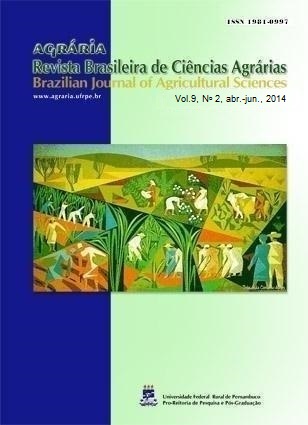Changes in physiological characteristics of sugarcane caused by trinexapac-ethyl
DOI:
https://doi.org/10.5039/agraria.v9i2a3783Keywords:
photosynthesis, growth regulator, transpirationAbstract
The use of plant growth regulators has been performed frequently, especially in the large sugarcane or sugar alcohol plants in Brazil, due to the need for early harvest and optimization of agricultural planning. However, incorrect applications of these products may adversely affect the physiological processes of the plant resulting in the failure of this technology. This research evaluated the effects of trinexapac-ethyl applications in different seasons on the physiological characteristics of sugarcane to improve the management of this crop. The treatments were arranged in a randomized block factorial design (3 x 2 + 2), with four replications. The factor A corresponded to times of application of plant growth regulator (120, 200 and 240 days after budburst (DAB) of sugarcane) and factor B the number of applications (one or two applications). In addition, two controls (one with three applications and other without application of the regulator) were added. The mode of application of trinexapac-ethyl (number and time of application) affected differently the physiological characteristics of sugarcane plants. The one at 120 DAB and sequentially at 120, 200 and 240 DAB application increased the consumption of CO2, stomatal conductance, transpiration rate and photosynthetic rate. It was concluded that the application of trinexapac-ethyl may result in agronomic benefit to sugarcane growth, because when applied to 120 or sequentially at 120, 200 and 240 DAB promotes increments in the variable component of the process of photosynthesis which can result in better development and growth of crops.
Downloads
Downloads
Published
How to Cite
Issue
Section
License

This work is licensed under a Creative Commons Attribution-NonCommercial 3.0 Unported License.


